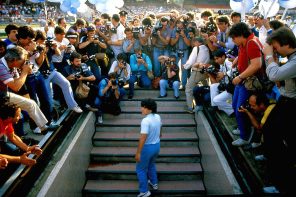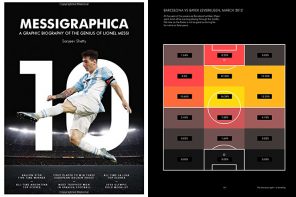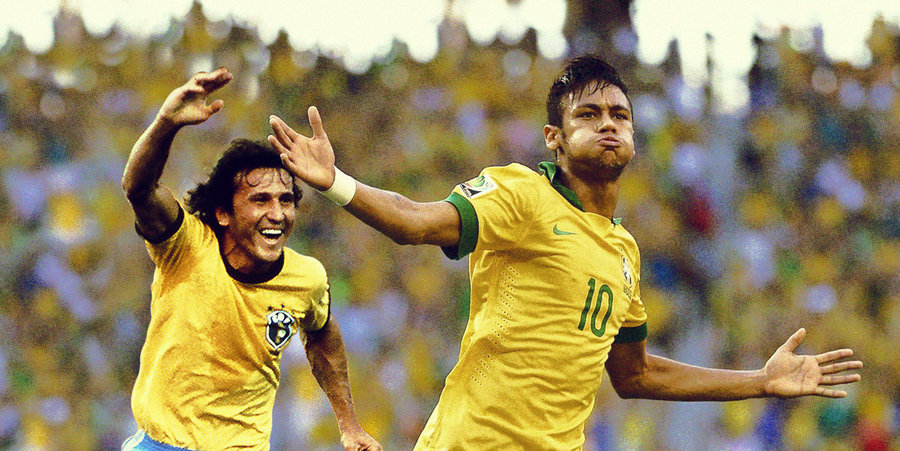Here at fantasista10.co.uk we’re always happy when a great new football book comes along; especially when the book’s topic is certain to ensure it be crammed full of fantasista-related material.
Written by English and Italian football writer George Rinaldi, Calcio’s Greatest Forwards includes numerous anecdotes about some of the finest Number 10s to have graced Serie A – featuring the likes of Roberto Baggio, Francesco Totti and Roberto Mancini amongst others.
We caught up with the George, who was kind enough to share his experiences of researching and writing what is a must-read for both fantasista fanatics and Calcio enthusiasts in general.
What inspired you to write a book on this topic?
GR: I have a few reasons for opting to write this book. My main inspiration derived from the fact there are not many books on Italian football. I must have read over John Foot’s: Calcio, A History of Italian Football a dozen times to this day, alongside a couple of others. With football and sports books in general becoming quite a big thing, with many writers showing their expertise in book form, I wanted to give something back to Italian football by writing this book. I wanted people to learn about the likes of Silvio Piola, Gunnar Nordahl and Giuseppe Meazza in greater detail alongside the likes of Francesco Totti and Roberto Baggio. Those from the 1930’s onward were vital in giving us some the greatest footballing moments of the past 80 odd years and they deserved to be recognised for what they achieved aside from just a goalscoring tally to their name. That was my main draw-in to work on this project.
 You couldn’t write a book on this topic without researching a number of fantasisti who’ve graced Calcio – who’s included and what process did you go through in terms of selecting to make the cut?
You couldn’t write a book on this topic without researching a number of fantasisti who’ve graced Calcio – who’s included and what process did you go through in terms of selecting to make the cut?
GR: Good question! Well of course Roberto Baggio features, one of the true fantasisti that ever graced L’Italia at a time when calcio was unrivalled at the top of the footballing pyramid. For those who know Italian football, they know Il Divin Codino is so much more than a man who missed a penalty and I wanted to show that. Roberto Mancini also features, a man who was made for the no10 role from his early days of playing.
In terms of picking players, I had about 40 names at the start and managed to get 21 done for the book. Players like Omar Sivori, Ronaldo, Ruben Sosa and even Valentino Mazzola were left out. However, in regards to Mazzola, I believed the words I would write could not reflect what he achieved with Il Grande Torino, and advise readers to learn about the 1940’s side that was truly a wonderful addition to Italian football.
How long roughly has it taken to write the book and how did you go about researching the [Number 10] players?
GR: It’s been an ongoing process for two years, but it really started to take shape in the latter stages of 2015. Every single day I spent working on this book, trying to give the best possible read for all who wish to learn and reminisce about Italian football. As for the ever present no10’s, research was fixated into newspaper archives: La Gazzetta dello Sport, La Stampa, Corriere della Sera etc. These publications were a valuable help and I’m forever indebted to them. I was also guided by Luca Caioli’s book on Roberto Mancini: A Footballing Life who was happy to let me include a variety of quotes and facts into the book. Even this website was an aid to giving me an insight into Roberto Baggio!
During your research of the 10s, did you come across anything particularly unique or was there anything that surprised you?
GR: I really felt Baggio’s pain of his injury prior to the move to Fiorentina. There was so much more to it than just a career defining injury. He found Buddhism, a method that helped him recuperate, considering he had 220 stitches popped into his leg! This is a man who in his later days as a footballer had to use his car door to hoist himself up to walk to training. Learning about Baggio in this light gave me a new perspective on the man, and how much he had to overcome in his professional career.
Do you have a favourite No.10? If so, who and why?
GR: Oh that’s a tricky one. I’ve always been fond of Francesco Totti, despite the fact he is more a trequartista. My father is a Roma fan, so I’ve always joked about with Francesco, saying “Hasn’t he retired yet,” just to annoy him, but the Gladiator has been a stronghold on what Italy was once upon a time – the very best.
Francesco Totti is one of your cover stars – any particular reason why?
GR: I wanted a cover that stood out on the shelves and one man pretty much everyone knows from Italian football is Totti. He has been there since the early 1990’s and is still plying his trade as he reaches the 40-year-old mark. Also, by being the 2nd best all-time scorer, it made sense to put him on the front as I wanted Silvio Piola to feature. It worked out pretty well, considering Piola was mainly a Lazio player, so it has the hint of a derby in more ways than one. Steve Welsh did a fantastic job with the cover, I was really pleased with the outcome.
Why do you think Italy have produced a number of fantastic goalscoring No.10s down the years, who enjoyed such longevity?
GR: Probably the style of play that Italian teams were applying on the pitch made that a key factor. Baggio was the visionary, the creator. Mancini exemplified such a role as did Totti on a few occasions. With the likes of Zdenek Zeman and his “all-out-attack” notion, there needed to be that player who could connect the midfield with the attack and vice-versa.
Why do you feel the country is now struggling to produce the next generation of fantasisti?
GR: Again, referring to the other question, it’s the style of play. I think most up-and-coming stars of Italy wanted to be Baggio, so there wouldn’t have been a demise in those who wanted to take such a role by the scruff of its neck and make it their own. It’s a dying art such a role, and teams are more fixated on playing wide men and strikers that fit the mould of both a creator and a goalscorer. You see a lot of clubs adopting a 4-2-3-1 style, which doesn’t really allow a fantasista to thrive.
Do you have hopes, or have you heard, of any who could take up the mantle?
GR: As for Italy, that’s a tough question. Roberto Soriano isn’t too far off taking such a role in his stride, but I think it’s a dying art in all honesty. Although I feel today’s “playmakers” are not like those of yesteryear, someone like Mesut Ozil would be my pick. He has an eye for an incredible pass and has chipped in with some goals too, but he’s not like what fantasisti were. Lionel Messi could possibly fill that role too.
Are there any strikers included who you feel really benefitted from playing in the same side as a particular fantasista?
GR: Gianluca Vialli. The terrible twosome with Mancini was a match made in heaven for Sampdoria. Gernelli del Gol they were known as – the goal twins – and rightly so. They were the reason for their historic Scudetto. Although Vialli doesn’t feature, as I felt I had to choose between the two and Mancio was more valuable as a player.
Can tell us about a particular favourite part of the book (a topic/story) which involves a No.10 – a teaser, if you will?
GR: Here’s probably my favourite quote from Roberto Mancini to sum up this question:
“The number 10 is that player who surprises and excites, wrong-foots everyone with a piece of skill perhaps he’s not even fully aware of. I knew this number was my destiny right away.”
Calcio’s Greatest Forwards is available to buy now from Amazon and other good bookshops. You can also follow George Rinaldi on Twitter.






